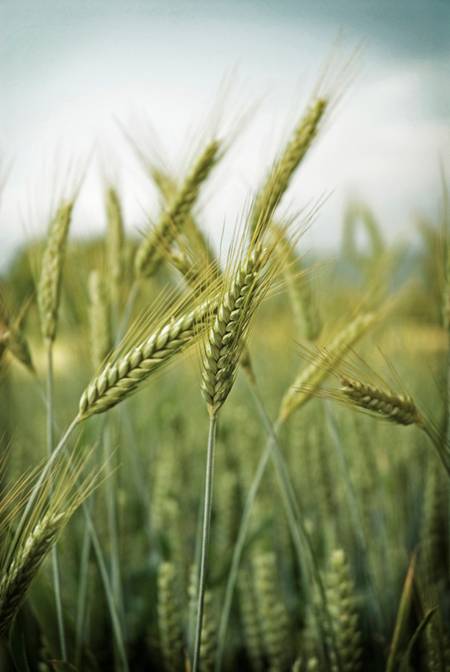- About Us
- Events & Opportunities
- Publications
- GROW BIOINTENSIVE
- International Partners
- Memberships/ Contributions
Area Needed for a Raw Food Diet
From Ecology Action
Question: We eat an all raw diet and we are wondering howmuch space is needed togrow a complete diet for one person for a whole year. In How to Grow MoreVegetables it states that 200 sq ft are required for one person’s diet for a year.Later it states that 4,000 sq ft are optimal for a complete diet for one person for one year. Why the different figures?
Answer: Good question. It is a bit complex, but theshortanswer is that 200 sq ft is the area needed to grow the amount of soft fruits (strawberries, cantaloupe, watermelon) and salad vegetables eaten by the average person in the United States. This is not, however, meant to constitute a complete diet because these crops alone don’t provide sufficient calories. Generally speaking the soft fruits and veggies portion of a garden design provides the missing vitamins and minerals from the crops grown for calories, which take most of thefood raising area to grow.
Here are some other important considerations:
- A person eating only raw foods is going to consume more soft fruits and veggies than the average person. Most likely you will want to incorporate some of the special roots crops, such as garlic, leeks, turnips, and possibly even potatoes (which are quite healthful raw when juiced) in order to get sufficient calories. Additionally, hard or dry beans and grains can be grown and sprouted to use as part of a raw food diet. If special root crops and/or grains are included in your garden plan then you will have to increase the growing area from 200 sq ft. You will need to work with the charts on page 47 of The Sustainable Vegetable Garden to calculate the specifics for the plan that best suits you.
- A complete diet for one person realistically takes 4,000 sq ft, when grown at GROW BIOINTENSIVE® intermediate yields. The ideal ratio for the 4,000 sq ft garden is 60/30/10 (In the tropics with a longer growing season it can be 50/30/20). That is, 60% in compost and grain crops, 30% in special root crops and 10% in soft fruits and vegetables, which includes dry or hard beans (there is also allowance in the 10% area for half of it, or 200 sq ft, to be income producing). It is always important to remember that we are not only talking about feeding ourselves, but feeding the soil so that our garden or Mini-Farm is sustainable for the long term. The 60% area is the key component here because this allows you to create a closed system that isn’t drawing on resources from somewhere else to create soil fertility.
- If you choose to derive most of your calories from grains it will take more land than if you are using potatoes as your calorie crop. See pgs 7-10 of The Sustainable Vegetable Garden to get a better understanding of planning for calorie crops.
NOTE: When incorporating members of the allium (onion) family into a raw-foods diet, be aware that foods such as onion and garlic, when consumed raw in large quantities, have been known to cause damage to red blood cells and are likely to cause anemia in large amounts. The specific type of anemia caused by eating a lot of raw garlic is called Heinz-body Hemolytic Anemia and is caused by the thiosulfate in the garlic denaturing the hemoglobin in your blood. And raw onions will cause this even faster than raw garlic because onions contain more thiosulfate. Some people are a lot more sensitive to the effects of thiosulfate than others, so use caution when introducing lots of allium species into the diet. The symptoms of HBH Anemia are shortness of breath, fatigue, pain in the chest, sore tongue, and possibly blisters or pain in other parts of the mouth.
Also worth mentioning, never feed raw onions or garlic to dogs, cats, or other primates (i.e. monkeys) for that matter, as they are all much more sensitive to thiosulfate than humans and often die from exposure to it.
If you still want to eat raw(ish) garlic without the thiosulfate, we have heard that you can try fermented garlic - garlic that has aged in whey or raw vinegar for a while (it may work with onions, too). While we've never tried it, it is apparently an Italian and small farm delicacy and is supposed to greatly reduce the amount of thiosulfate, and also apparently increases the amount of available nutrients. For more information about this, go to http://www.antlife.org/eating-more-garlic-health-benefits/And, as always, before adding any potentially unsafe food to your diet, talk to your doctor about issues like this -- it's always better to be safe than sorry!
Click here to become a member or to donate to Ecology Action online!
